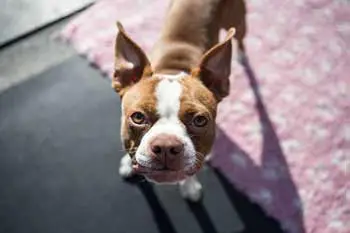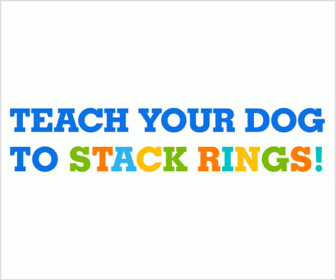Are you having trouble training your dog? It can be a difficult task, with various factors that come into play. In this blog post, we will address 10 common challenges and offer solutions to overcome them. We hope these tips help make the process of training your dog easier!
Make sure your dog is healthy before beginning any training.

Dogs have an instinct to please their owners. As such, they will do almost anything you ask of them if they see it as part of the process of receiving love and attention from you. Your dog is more likely to listen when he is feeling healthy and energetic – so make sure your pup gets his recommended vaccinations before training begins!
Many dogs require extra care in specific circumstances that can lead to health problems later on. For example, overweight dogs are at risk for diabetes, heart disease, osteoarthritis, breathing issues, etc. Those with allergies or autoimmune diseases need special diets; young pups under six months old still need puppy food rather than adult food; senior dogs need special attention to keep them healthy as they age.
Before beginning any training regimen, consult with your veterinarian about what is best for your dog’s breed and condition! Not only will it make the process easier – you’ll be able to tell if he has a problem because of his health.
Dogs who are not well, are sick, or injured can be more resistant to training. Make sure your dog is healthy before starting any training program.
Don’t start the process until they’re feeling better! Your canine may be less likely to stay focused on commands if he isn’t 100%. Wait for them to get their energy back up and then try again.
Start training your dog as soon as possible.
Dogs are still developing mentally until they are about two years old. The more you can teach them good behaviors, the easier it will be for your dog’s mind and body to become accustomed to those habits all on their own!
The earlier you start training your pup, the better off he is in life. It doesn’t mean that if you’ve just acquired him as an adult that there isn’t hope – but it does require a bit of extra effort on both ends.
As soon as you get your new puppy, you should begin training them for basic commands. They will learn much easier while they are young and impressionable! It can be more complicated to wait too long to start training because the pup has already developed bad habits that need breaking.
Start teaching your dog a few simple commands early on in life – never miss out on this opportunity! It’s going to make future communication with him so much easier down the line.
Make sure his environment is safe enough for learning before trying any strenuous exercises or activities together.
Even if he seems perfectly healthy and ready to go, don’t push it when it comes time for exercise or playtime until after consulting with a veterinarian about what would be best for his breed and state of health.
Let them take their time to learn what they need to know.
Every dog is different, so find the pace that works best for them.

Some dogs are naturally more eager to please their owners than others, but you should try your hardest not to push him too hard when it comes time to do something strenuous or potentially dangerous – no matter how happy he seems!
Always take things at his speed and never force anything until you have talked with a professional about what’s right. Don’t ever punish training mistakes or accidents; instead, remain calm and consider why they made a mistake.
Dogs don’t understand punishment like humans do; if they make an accident in front of you (and especially on purpose), then give them some time before beginning any activity again. If you’re moving slowly enough, you’ll be able to tell if there is a problem.
Teach them the right way and show them what’s expected of him by setting an example for how he should behave – and your dog will learn much faster than trying to punish his mistakes! If we can’t figure out why they made this mistake, then it might not have been their fault at all…
Never give up on training no matter what; always remain calm and patient with your pup and yourself – because mistakes will happen along the way.
Dogs are smart creatures who pick up on things quickly when shown how something works consistently over time; however, they will always retain certain behaviors until taught otherwise, so don’t expect him to figure out everything overnight!
Be patient with your canine friend as you work together through each step of the process.
Other than games or tricks designed for dogs specifically (like agility training or flyball), your dog should take his time to learn.
It may seem like he’s not doing things quickly, but this is normal – dogs are intelligent and can adapt very well; it just takes longer for some than others!
Make sure you’re consistent with the commands and never give in to whining or pleading.
Let your dog know what is expected of him at all times.
Dogs learn through repetition and consistency – this means that you should always use the exact command words, phrases, or hand signals for each action so he can understand exactly how to respond! It’s important to remember not to give in when they whine or plead with their eyes; doing so will only encourage bad behavior because it seems like an effective way of getting them what they want.
Teach them one thing at a time before moving on to more complicated tasks or behaviors.
Don’t overwhelm your pup by trying too hard in his first few lessons! Bring out a treat bag, show him one simple trick and then reward him when he does it perfectly. Once he has mastered that, move on to a new command and repeat the process.
Do not get ahead of yourself when training him – make sure he has learned one thing perfectly before trying something else! This will help you avoid confusion from both ends.
You can teach your dog “no” to stop unwanted behavior or actions early on in life if they’re small enough for guidance.
However, it’s more effective to train them with positive reinforcement rather than scolding about things that are already established habits at this point – dogs may become defensive or aggressive toward their owner if correction is too harsh or frequent.
If your pup is whining or begging, it doesn’t mean he’s going to get what he wants!
If you give in, they will learn that this is how they can get their way. Make sure you remain consistent with the commands and don’t bend under pressure from your canine friend when training – if you do, it may be harder for him to understand later.
Keep training sessions short and fun – the goal is for them to enjoy it!
Make sure you’re rewarding him with yummy treats or praise consistently throughout the entire session to keep his attention!

It’s important not to make training sessions too long but also don’t start short and increase their length – your pup should enjoy it from beginning to end, so always set a timer for around 15 minutes at first.
He will look forward to these lessons if they are something he likes rather than dreads because of how long they last.
Training sessions should only last a short amount of time so as not to tire out the pet. Dogs have minimal attention spans, and just like children or humans, too much excitement all at once can lead them to over-exerting themselves physically, which could result in injury.
Keep each session relatively brief and save some energy for the next one.
Always use a treat when training, but don’t overfeed them, so they don’t get sick!
Make sure you’re giving him enough but not too much so that he becomes overweight and unhealthy.
Give them a treat each time after training or performing an action correctly to keep the positive reinforcement going strong!
However, make sure you aren’t feeding your dog too many calories because this can lead to obesity which is harmful to their health in the long run. So give them just enough without overdoing it while keeping their general well-being as a priority as well.
Limit sweets and fatty snacks – dogs shouldn’t be given human food full of sugar and fat like candies and cookies regularly (unless it’s during special celebrations). They should always stick with their dog food and treats, so they stay healthy and fit!
Provide plenty of exercise for your dog so they’ll be less likely to chew on furniture and other things around the house.

Exercise will make them feel more relaxed and calm, so they don’t get as agitated. After a good workout, your pup should be tired enough to sleep instead of destroying the furniture or anything else in sight!
Make sure you’re giving him lots of exercise daily so he doesn’t have too much energy leftover that could lead to destructive behavior like chewing up things around the house out of boredom.
Dogs love to run around and play, so make sure you’re allowing him plenty of time outside in the backyard or for a walk.
This will keep them healthy and active, which is essential for their happiness as well as yours!
Give your dog enough exercise daily but also make sure he snuggles up with you when it’s time to relax after a long day at work – dogs are social creatures who need both physical activity and emotional stimulation from their owner.
Never hit or yell at your dog – this will only make them more aggressive.
Don’t hit your pup, or they may turn around and bite you in the future. Your dog will become more aggressive if he feels threatened by harsh words or actions, so make sure to be kind at all times when training him!
You should always stay calm and collected when working with a dog – this is very important for their overall well-being and yours.
If you’re feeling a certain way, take a break and come back later to start your training session over again.
Remember that it’s essential for you not to become too agitated because this will only make the situation worse – stay calm at all times when working with your dog! If something upsets you, leave the training area and come back another time after taking some deep breaths.
Never yell at your canine friend because it can lead to fearfulness which is a dangerous situation that could result in biting. To keep everyone safe both physically and emotionally, it’s best not to raise your voice, whether during training sessions or otherwise. Dogs are social creatures who need love just like we do, so give them what they want and need!
Create an indoor space for the dog to call their own
This will help them feel more comfortable in the house, and it will keep them from chewing on other things that they aren’t supposed to!
Give them a designated spot in the house where they feel safe and cozy – this way, they’ll know to go there when they need some quiet time.
Keep their crate in this spot – the dog will learn that it is where they are supposed to settle down and sleep; if not, train them by feeding them in their crate!
Keeping treats with you at all times also helps! Whenever your pup starts acting cute, give them a treat immediately, so that good behavior gets rewarded right away.

Give them a safe place to go in the house when they’re looking for some alone time- this will help prevent separation anxiety and other issues! Just be sure it’s out of reach from where you keep things that might get chewed on or destroyed if left unattended.
Ensure there are no hazards around, such as children playing nearby, so your pup doesn’t accidentally hurt someone else while doing what dogs do best: have fun.
If there is no yard available, set up something indoors instead! Indoor trees or even just branches work well because they provide mental stimulation as well as physical exercise. These are great tools to use anytime you’re leaving the house and need to keep your pup busy for a little while.
To prevent your dog from acting out when you’re not around or during times when you can’t watch him closely, leave a radio playing near his space with music playing softly throughout the day. This should calm him down if he starts barking excessively while alone!
Use a leash when walking your dog to prevent them from running off or getting into trouble.
When taking your dog for a walk, using a leash will help you keep them safe and prevent things like road accidents or even injuries.
It’s also important to make sure they are wearing their collar at all times in case something happens; they should always have ID on them in case they get lost. If you’re taking your dog out and don’t plan to leave the area, use a harness instead because it will give you more control over their movements when needed.
Never walk off with your pup without knowing where he’s going or what he’ll do – this is how accidents happen! Keep them close at all times during walks so that anything terrible doesn’t occur unexpectedly, such as rolling into traffic or getting chased by another animal nearby.
Conclusion
By following these simple tips for training your pet, everyone stays safe and happy, which is what it’s all about!
Training your dog can be a long and frustrating process. It takes patience, consistency, and plenty of practice to teach your pet the basic commands like sit or stay. Many different methods work for various pets; however, no one size fits all approach will work every time with any animal.
The ten tips in this blog post should help you get started on how to train your pup in the right direction!
Which training tip has helped you most? Comment below so other readers knows where they should focus their attention first!

Discover the dynamic world through the eyes of Joanna Perez: a celebrated Cognitive Behavioral Therapy Practitioner and an ardent blogger. Not just a writer, Joanna is also an explorer, partner, and a proud mother. Her expertise goes beyond penning thoughts on parenting, health, and lifestyle; she’s also a certified Women Empowerment Life Coach. With training in Life Mastery, Health, Happiness, and Success, she’s equipped to guide you through life’s complexities. Her dedication to education shines as she’s dived deep into the realms of Neuroscience for Parents and completed the Skilled Helper Training Course.
Reviewed By: Anna West and Brenda Tillman
Edited By: Lenny Terra
Fact Checked By: Marcella Raskin
Photos Taken or Curated By: Matthew Mansour
